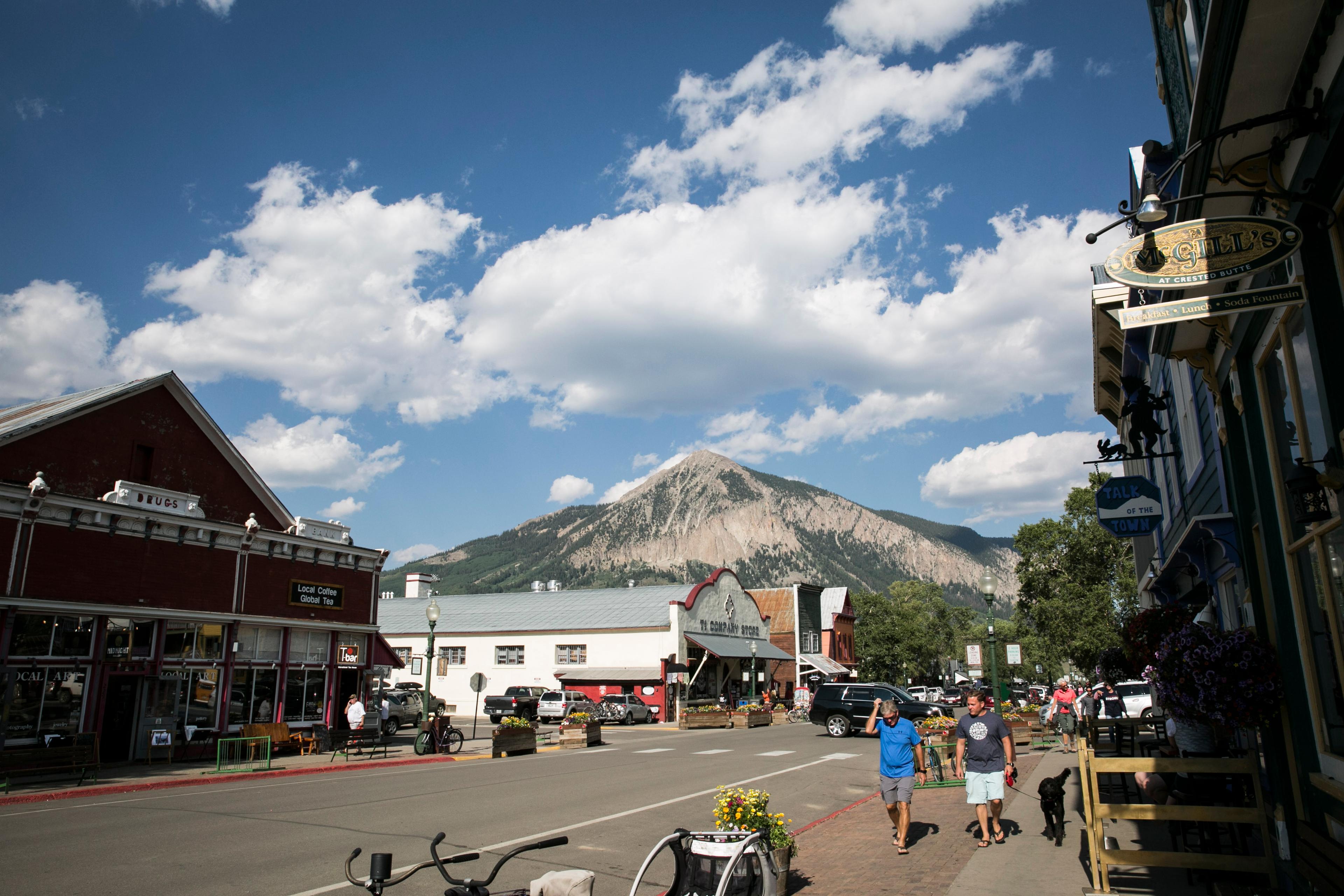
A few decades after the last coal mine closed in the 1950s, Crested Butte faced a choice. A huge deposit of molybdenum — a precious metal — was discovered just outside the central Colorado town.
“It was going to be a ghost town, or a resort, or a mining town,” said Cathy Sporcich, a Crested Butte native whose father worked in the coal mine. “We chose the resort.”
Crested Butte Mountain Resort flourished for a time, as Texans, Oklahomans and other southerners looking for a ski vacation at cheaper-than-Vail prices flocked to the town. A generation of self-described hippies moved in, where they bought up cheap miner shacks and put on events like the uphill Telemark race and the chainless downhill bike race. Crested Butte gave itself the title “The Last Great Ski Town in Colorado,” thumbing its nose at its more posh neighbors in Aspen and Vail.
So it’s no surprise that many locals screamed bloody murder in June when corporate giant Vail Resorts announced it was buying family-owned Crested Butte Mountain Resort. The local public radio station played Pink Floyd’s “Money” and Santana’s “Soul Sacrifice” back-to-back shortly after news of the deal broke.
But interviews with nearly a dozen local residents of many stripes show the Last Great Ski Town is getting used to the idea of corporate ownership. They hope Vail will inject much-needed investment into the resort’s aging infrastructure and base area.
“You might as well look for some of the positive because it's a fact,” Sporcich said. “I don't think Vail wants to, or can, change the funkiness of Crested Butte.”
And Vail indicated it has no intention of doing such a thing. “Honoring the history of Crested Butte and the surrounding community is crucial to us, and we know it’s important to our guests,” a company spokesperson said in a statement.
Others say the bucolic image of Crested Butte as an affordable, anti-corporate skiing paradise is as outdated as the resort’s fixed-grip chairlifts. And there are facts to support the assertion. Service industry workers, and even middle-class professionals have to live miles away downvalley — a dynamic similar to other ski towns in the state. Modest homes in the quaint town routinely sell for more than a million dollars.
All in all, the town’s bet on skiing and tourism paid off — in spades.
“It's kind of like you get what you ask for,” Sporchich said.
While most are cautiously optimistic the skiing experience will improve, some young residents are fearful that Vail’s arrival will cause another real estate boom that will squeeze them out. As the Vail deal is set to close in the near future, Crested Butte faces another high-stakes choice: Who is the town for?
Hard Work, Cheap Homes, And Great Skiing
Glo Cunningham was just off a five-year trip around the world when she and a friend drove over Kebler Pass and dropped into Crested Butte in the late summer of 1975.
“My girlfriend and I looked at each other and went, ‘This is the place,’ “ she remembered.
Cunningham was part of a cohort of youth who gravitated to the nearly dormant ex-coal town. The ski resort was just starting to establish itself. But Crested Butte was still largely unknown.
"It was kind of the place time had forgotten, and most of America had forgotten too,” said Myles Rademan, who lived in Crested Butte from 1972 to 1986. These frontier ski bums made the town into what they wanted: a hub for great skiing, with a funky reputation. There’s an old joke that you need a box full of costumes to live in Crested Butte.
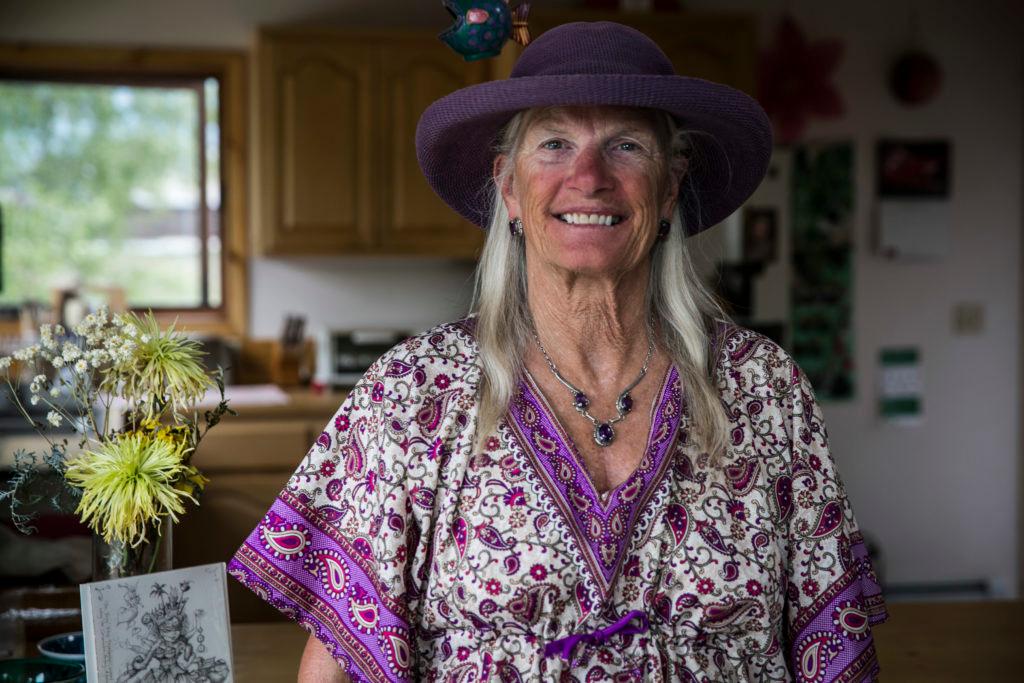
(Nathaniel Minor/CPR News)
Glo Cunningham moved to Crested Butte in the 1970s and still calls it home.
“I have probably 35 wigs, and probably 25 boas, and probably 20 outfits that have sequins in them,” Cunningham said.
The ex-coal miners who stuck around looked at the newcomers like they were “a bunch of yahoos — long hair, over-education, never did an honest day’s work,” Rademan said. “And that’s true.”
While the Mid-Timers, as members of this tribe call themselves, never worked in the mines, they pieced together their livings waiting tables, cleaning homes, and other part-time jobs. Current Crested Butte Mayor Jim Schmidt said his first job in town — construction — paid $2.93 an hour.
“And when the season was over, I had to go out and look for another job,” said Schmidt, who first came to town in 1976 on a motorcycle tour and never left. “It was very difficult to make money then.”
Making a living was tough, but finding a place to live wasn’t. A friend of Rademan’s bought a house for $9,000, then filled it up with friends to help pay the mortgage. “It had no insulation,” he said. “And of course, it was always 30 below there in the winter. So we always kidded, if you left milk out on the table, it would freeze. You had to put it into the refrigerator.”
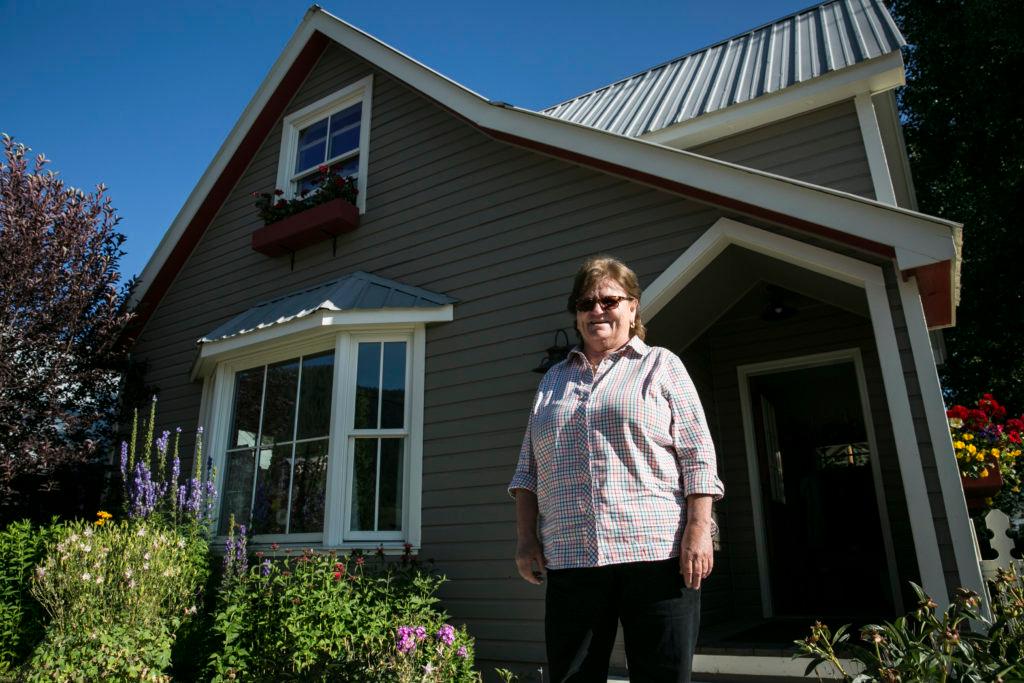
(Nathaniel Minor/CPR News)
Cathy Sporcich, a Crested Butte native, stands in front of her home in town.
Over the course of the 70s and 80s, some of the Mid-Timers, and natives like Cathy Sporcich, scraped together enough savings to buy homes at bargain prices. Sporcich got in just in time — in 1989, she paid $50,000 for an old, rundown house two blocks off the main drag in town, Elk Avenue.
“People thought I had lost my mind,” said Sporcich, who started a property management company on the side to help bring in more income. “That's all I could afford, so I bought it.”
Real estate prices have risen steadily since, and took off in the 2000s when the Mueller Family bought Crested Butte Mountain Resort. Mansions now dot the valley. A restrictive building code has meant that the town itself has retained much of its physical character even as newer homes were squeezed into spare lots here and there. That code was the “best thing that ever happened to Crested Butte,” Sporcich said, “because it's kept it the way it is.”
"Can I Make It Work? I Don't Know"
Cassidy Tawse-Garcia graduated college in the middle of the Great Recession — 2009 — and couldn’t find a job. So she decided to live the ski bum life and landed in Crested Butte. “It was super easy to find a place to live,” she said. “Landlords were like begging us to sign a lease with them.”
Like the Mid-Timers, Tawse-Garcia stitched together a living with multiple jobs. And it was all worth it, she said, because of the top-shelf outdoors experiences she had and the connection she felt to her community — including people like Glo Cunningham.
“We were spending as much time together as possible outside, cooking communal meals,” she said. “Also, there were a lot of older people that had originally come in the 1960s who kind of were like these grandmothers and grandfathers, in a way, of the community.”
Tawse-Garcia, a Front Range native, eventually earned her master’s degree at Western State Colorado University in nearby Gunnison. She’s now executive director of the Gunnison Country Food Pantry, and holds four other part-time jobs.
But things have changed since the economy improved in recent years. The number of 20- to 34-year-olds in Crested Butte has fallen from 658 in 2010 to 454 in 2016, according to Census Bureau data. Tawse-Garcia said housing has become prohibitively expensive in Crested Butte — especially now that she’s looking to settle down and buy a home.
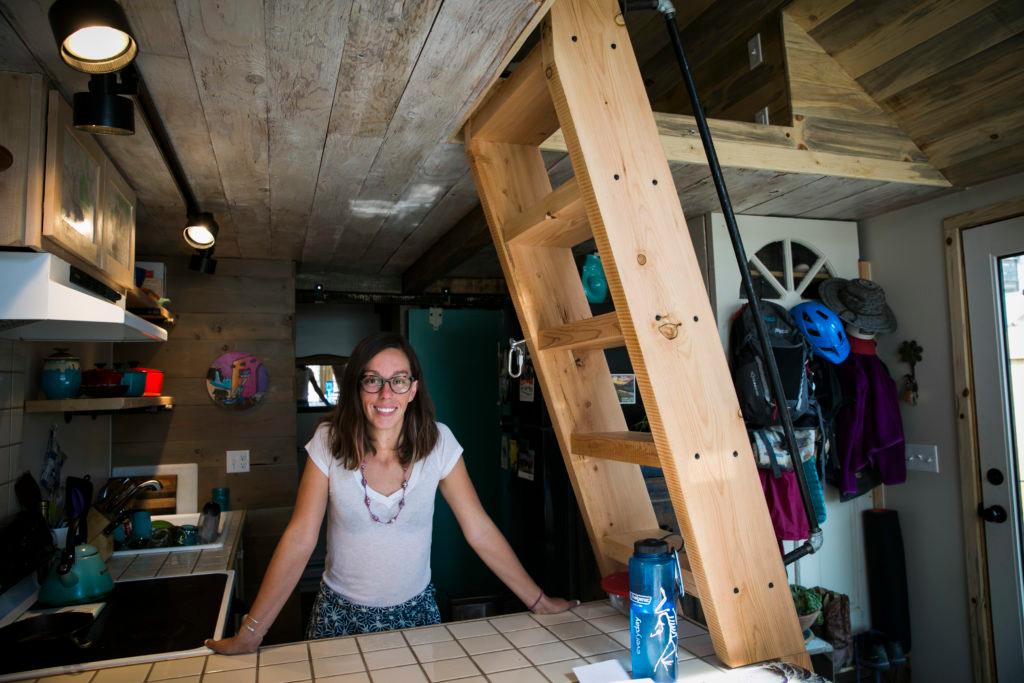
(Nathaniel Minor/CPR News)
Cassidy Tawse-Garcia stands inside her home in Gunnison, Colorado.
For now, she’s living in a friend’s 375-square-foot refurbished garage in Gunnison and commuting to Crested Butte multiple times a week. As she gets farther from her ski bum past, she said her priorities are changing.
“Before, the scales were more tipped in the direction of ‘I'm living my best life, I'm enjoying the outdoors, I have my friends, this is all worth it.’ I think now, as I'm moving along in my career, I'm looking to feel more settled, and right now it's really, like, ‘can I make it work?’ I don't know. I'd like to try, but I'm not sure,” she said.
Matt Steinwand has managed to stick it out in Crested Butte, in what he calls one of the town’s last affordable ski bum pads. Bikes and knee-high grass litter the front yard less than a block from Elk Avenue.
“When this place sells for whatever reason, it's going away. It's gone. That's what happens,” said Steinwand, a supervisor for the Crested Butte Conservation Corps. He’s especially worried that Vail’s arrival will mean real estate prices will get even higher. (Real estate agents in town say while asking prices have gone up about 20 percent since June, sales have not yet followed.)
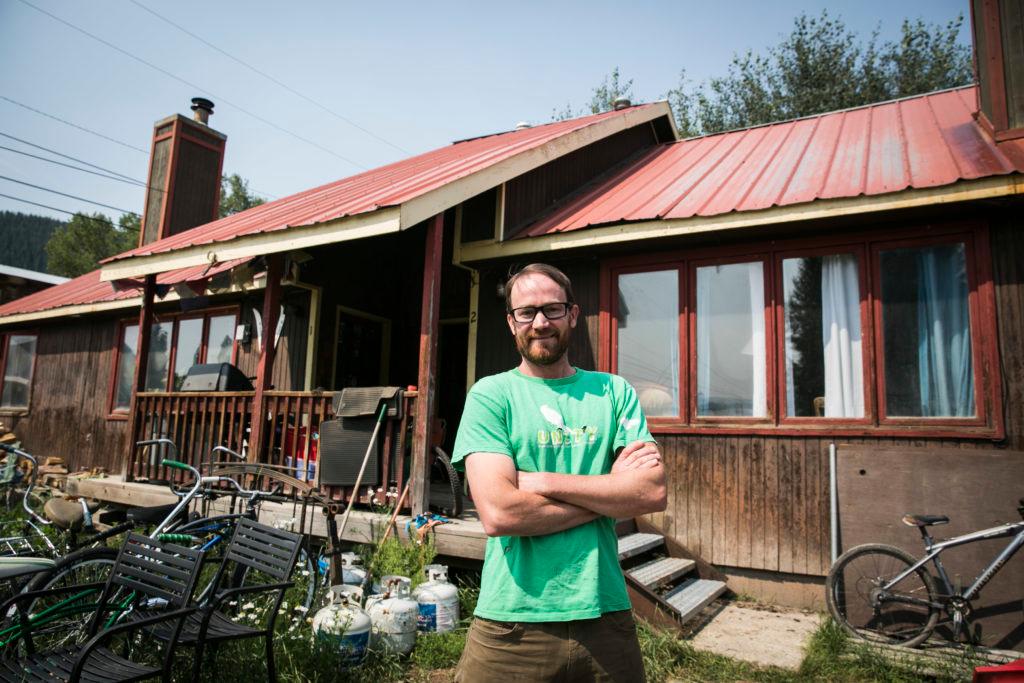
(Nathaniel Minor/CPR News)
Matt Steinwand says he lives in one of Crested Butte's "last affordable ski bum pads."
"I think we're going to lose a little bit of our soul for sure,” Steinwand said. “We're not going to be as eccentric anymore.”
Both Tawse-Garcia and Steinwand say their best shot at home ownership is in Gunnison, 30 miles south of Crested Butte, where houses are much cheaper. That thought doesn’t hold much appeal for Steinwand.
“I don't want to be in a community where everyone commutes to where they work,” he said.
Divisions Over Housing Proposal
One possible solution to Steinwand’s and Tawse-Garcia’s dilemma is a proposal for affordable housing just outside of Crested Butte. A Houston-based developer wants to build a 220-unit housing project, with more than 100 affordable units. The project requires sign off from the four parties that own the parcel in question: the towns of Crested Butte, Mt. Crested Butte, Gunnison County, and Crested Butte Mountain Resort. It’s been mired in the approval process for more than a year.
The main objection is that the Brush Creek units wouldn’t fit in with the single-family homes in a nearby development, some of which fetch more than $3 million. That’s according to David Leinsdorf, an attorney representing a group opposing the project.
“Dropping 220 units, multi-family buildings, on 14 acres that's adjacent to single-family, is not compatible with the neighborhood,” said Leinsdorf, who also pointed out the county mandates such a standard. Other complaints are that the proposal is too dense, would cause traffic problems, and would overload the school in Crested Butte.
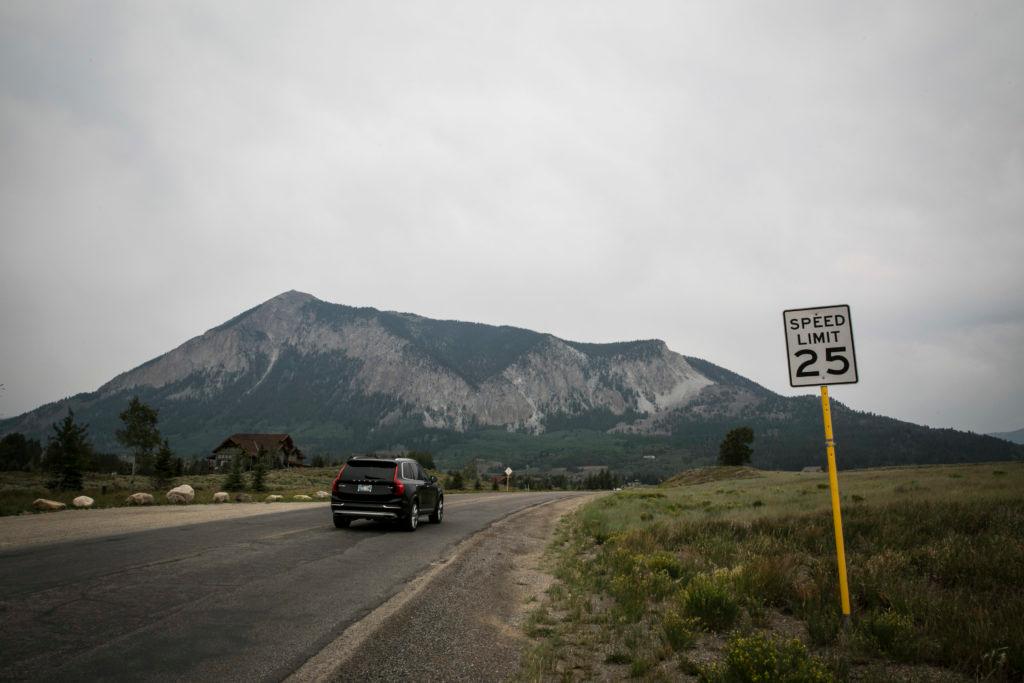
(Nathaniel Minor/CPR News)
A Texas developer has proposed building about 200 housing units at the location at right, about three miles south of Crested Butte.
Steinwand said larger developments catering to wealthy second-home owners are routinely approved.
“And then, when a developer from out of town wants to make a dense, sort of, uncharacteristic, apartment, big, square apartment building, you know, everyone cries foul,” he said. “I think it's very reflective of our values as a community. Crested Butte is for rich people.”
Crested Butte Mayor Jim Schmidt blames the free market for incentivizing high-end building, and said neighboring municipalities should do more to create affordable housing. He also pointed out that 22 percent of Crested Butte’s housing stock is deed-restricted to keep it affordable for locals.
“We want to have people who are part of our town,” Schmidt said. “People who are the firemen and snow plow drivers and policemen who participate in the theater and all that. That's been our concentration.”
Glo Cunningham, a Mid-Timer, said she supports more affordable housing in Crested Butte — but just not Brush Creek proposal. She thinks affordable homes should be spread through the valley to minimize impact. She admits she “got lucky” with her own home in town, which she built in the early 1990s, and said her heart breaks for people like Tawse-Garcia.
“I'd try to help, do anything I could to help her stay, and people like her to stay,” she said. “It's hard.”
Myles Rademan, meanwhile, had a practical thought for young people trying to live in a place that’s like Crested Butte was in the 70s and 80s. “Go find your own place that hasn't been discovered, that's a dump,” he said from his home in Park City, Utah. “And go work your butt off for 20 or 30 years and make it into something. But make sure you buy in early.”
Tawse-Garcia said there’s some merit to that idea. But she said the problem of affordable housing is not unique to the Gunnison Valley — it’s unique to her generation.
“I have so much respect for the Mid-Timers,” she said. “And I really do see them as the protectors of our town, especially the north end of the valley. But, I, myself, have desires to have those things too. I think this is a larger societal thing. I'm going to be part of the first generation that will probably make less money than my parents, or perhaps a lesser lifespan. I don't think, as a society, we can just say, ‘well, that's okay. That's just how it is, that's progress.’ ”
Real progress, Tawse-Garcia said, would be if her community tried its best to keep the people who most want to make a life there.









